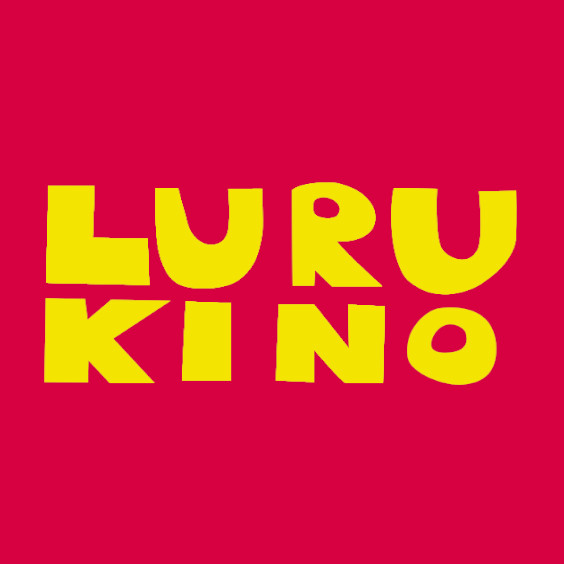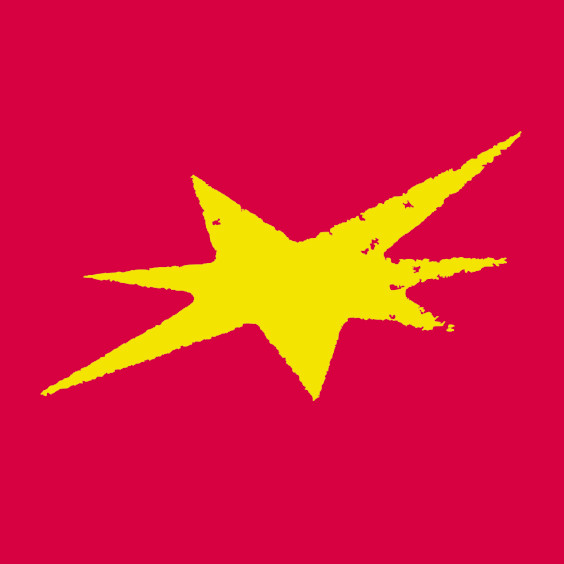Retrospective | BAD GIRLS GO TO HEAVEN







US 1974, D: Stephanie Rothman, A: Sarah Kennedy, Laurie Rose, Cassandra Peterson, 80’, English OV, DCP
Like its predecessors THE STUDENT NURSES (1970) and GROUP MARRIAGE (1973), WORKING GIRLS is a 1968-esque libertarian sex and relationship comedy that revolves around an ensemble of unequal women who come together to form a solidary community in the face of their personal circumstances. And, as is just as usual for Rothman’s film cosmos, there is a lot of contemporary atmosphere and local colour here: a sun-drenched Los Angeles of striptease nightclubs, huge advertising billboards and quintessentially American diners along motorways, a cinema of hot pants, wide collars, tie-dye shirts, all kinds of small-time crooks, dealers and weirdos.
Courtesy of Vinegar Syndrome, LLC
| Tue 10 Sept | Luru Kino in der Spinnerei |
| 9 pm | € 7 (6 reduced) |
Retrospektive | BAD GIRLS GO TO HEAVEN










US 1977, D: Roberta Findlay, A: Tara Chung, Jennifer Jordan, Jake Teague, 84’, English OV, DCP
A film that pays tribute to the two most “extreme” genres in film history, allowing them to form an increasingly unholy alliance and pointing out how radical the US genre cinema of the 1970s once was: A WOMAN’S TORMENT combines satirical hardcore porn with tangible psycho-horror plus the gore of slasher films. This is quite unusual for a representative of the commercial, often stereotypically produced adult film, where it should be clear “what you get”, where the aim in the adequate cinemas at railway stations was to get a (male) audience horny.
| Tue 10 Sept | Luru Kino in der Spinnerei |
| 7 pm | With a video interview between André Malberg (film collector and historian) & Roberta Findlay € 7 (6 reduced) |
Carte Blanche | KINOTHEK ASTA NIELSEN







SHORT FILM REEL & CONVERSATION
Named after the Danish actress and probably the first global silent film icon Asta Nielsen (1881–1972), Kinothek Asta Nielsen was founded as a feminist film initiative in Frankfurt am Main in 1999. As an association of film lovers, the Kinothek has since been dedicated to rediscovering, archiving and presenting the film work of women and LGBTQI people. The endeavour to make these and their works visible again through numerous film series, individual events and publications is not based on a nostalgic impulse, but is rather linked to the aim of describing the connections and causes that have led to the their suppression or interrupted history of reception. The film festival Remake. Frankfurter Frauen Film Tage, which has been organised annually since 2018, is one of the Kinothek’s more recent activities and represents an important contribution to the development of modern models for cinema and archive work as well as the contemporary imparting of film history.
As part of a collaboration, we have invited the operators to put together a short film reel with works from their archive to get into conversation about them. In addition to the films themselves, topics will be the work of opening up cinema spaces plus discovering and publicising forgotten works.
The analogue selection includes, for example, Ula Stöckl’s debut film ANTIGONE (1964), in which she reduces the central conflicts of the tragedy material to pure plot moments, as well as Matthias Müller’s found footage film HOME STORIES (1990), a collage of US melodramas and crime films from the 1950s and 1960s. Narrative routines and recurring clichés allow Müller to seamlessly merge scenes from various films with different protagonists: stars such as Tippi Hedren, Kim Nowak and Grace Kelly talk on the phone, sleep restlessly, listen at the door, are horrified. In the montage, their movements and gestures seem almost choreographed. At the same time, Müller’s editing shows how women become the voyeuristic victims of a cinematic (= male) gaze. In Cathy Joritz’s two-minute, humorous revenge fantasy from 1985, Joritz tackles the titular “Negative Man” via the diversions of the actual film stock: The director has scratched her visual commentary directly into the layer of the material.
HOME STORIES
DE 1990, D: Matthias Müller, no dialogue, 6‘, 16mm
TAKE COURAGE
DE 1987, D: Maija Lene Rettig, no dialogue, 9’, 16mm
MAMMA HERMMERS GEHT MIT IHREM PASTOR ZUM LETZTEN MAL ÜBER’N HEINRICHPLATZ: KREUZBERG ADIÖ
DE 1981, D: S.M. Rosi, German OV, 9’, 16mm
FAMILIENGRUFT – EIN LIEBESGEDICHT AN MEINE MUTTER
DE 1981, D: Maria Lang, German OV, 10’, 16mm
ANTIGONE
DE 1964, D: Ula Stöckl, German OV, 9’, 16mm
KUGELKOPF
AT 1985, D: Mara Mattuschka, no dialogue, 6’, 16mm
ES HAT MICH SEHR GEFREUT
AT 1987, D: Mara Mattuschka, German OV, 2’, 16mm
JOHNNY ODER DAS ROHE FLEISCH
DE 1984, D: Eva Heldman, German OV, 4’, 16mm
KOOL KILLER
DE 1981, D: Pola Reuth, no dialogue, 5’, 16mm
NEGATIVE MAN
DE 1985, D: Cathy Joritz, English OV, 2’, 16mm
| Mon 9. Sept | Schaubühne Lindenfels |
| 9 pm | In the presence of Lou Deinhart (Kinothek Asta Nielsen) € 7 (6 reduced) |
Homage | ROSE LOWDER
















Born in Peru, Rose Lowder has been working as a curator of film programmes, university lecturer, co-founder of the Archives du film expérimental d’Avignon, book author and filmmaker in France since the late 1970s. Her own works, made exclusively on 16mm – sometimes silent, sometimes with sound or music – captivate above all due to a fascinating examination of the movements, forms, colours and structures of the plant and animal world, but also due to the exploration of the possibilities of handling physical material, montage techniques, focusing, light and space.
We are showing a selection of her work that does not follow the logic of a chronological treatise, but instead aims to create a dialogue between them. In the programme, quintessential examples of her work are placed in rhythmically sensual and thematic relationships. Dedicated to the avant-garde idea of a new way of seeing and experiencing, early colour and movement pattern experiments can be admired in PARCELLE, which then have a significant influence on the ongoing series BOUQUETS, which – in one-minute fragments – catapults flower meadows, people, animals and objects into a furious thrill of images. The enormously high editing frequency, the multiple exposures and the sometimes unusual camera angles and compositions create novel worlds with the means of film art – worlds strangely detached and yet poetically connected with the parameters we are familiar with. In this way, objects are constantly given new meanings: Windsurfers become butterflies or grasses become human hair.
Then, in BEIJING 1988, the urban landscape of Beijing shortly before the Tiananmen protests, with its flags, bicycles and tai chi figures, becomes a bubbling source of inspiration. Finally, RUE DES TEINTURIERS makes the eponymous street dance frame by frame behind a balcony plant and develops a hypnotic pull beyond familiar fields of meaning. A space of immediate experience is created. An ultra-slow cinema of heightened speed and heightened senses, which – cut by cut – saws through the well-worn connecting lines of the meaning machine in our heads. To conclude the programme, LA SOURCE DE LA LOIRE follows the course of the Loire from its source and separates the visual and audio levels. First, we revel in elegiac sunlight, then the film releases us into a utterly black image. Subsequently, we hear the sounds of what we have just seen, while the river keeps flowing in front of our inner eyes, dissolving and flowing together again.
PARCELLE
FR 1979, silent, 3′, 16mm
BOUQUETS 6-10
FR 1994-1995, silent, 5′, 16mm
BOUQUETS 28-30
FR 2005, silent, 4′, 16mm
BEIJING 1988
FR 1988-2011, sound, 12′, 16mm
RUE DES TEINTURIERS
FR 1979, silent, 31′, 16mm
LA SOURCE DE LA LOIRE
FR 2019-2021, sound, 19′, 16mm
| Mon 9. Sept | UT Connewitz |
| 7 pm | In the presence of Rose Lowder € 7 (6 reduced) |
Topic | OUR SCREENS






FR 2023, D: Guilhem Causse, Ekiem Barbier, Quentin L’Helgoualc’h, 95’, English OV with German subtitles, DCP
The trio of directors from KNIT’S ISLAND – or rather their created characters – spent 963 hours travelling through the video game world of the online survival horror game DayZ. Their mission: to travel as journalists and stay alive long enough to immerse themselves in the cosmos of other gamers and exchange ideas with them. About motivations, goals and realities – inside and outside of virtual life and survival in it. From avatar to avatar. Before and during the COVID lockdowns, the filmmakers spent their time in the VR world of DayZ. KNIT’S ISLAND gives an impressive insight into the gaming aesthetics of this hyper-realistic mainstream horror game. It leaves us with the unsettling question of which world feels more real.
| Sun 8. Sept | Schaubühne Lindenfels |
| 9 pm | € 7 (6 reduced) |





